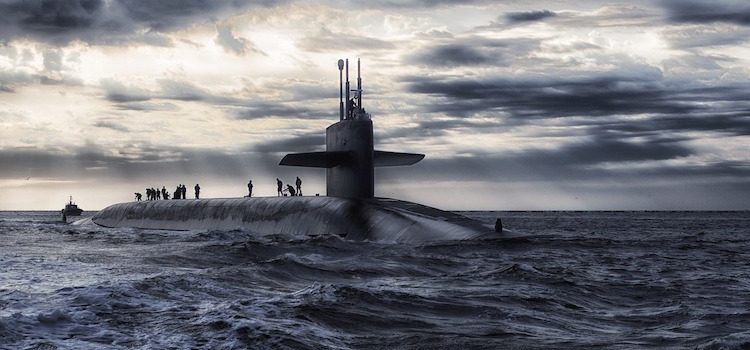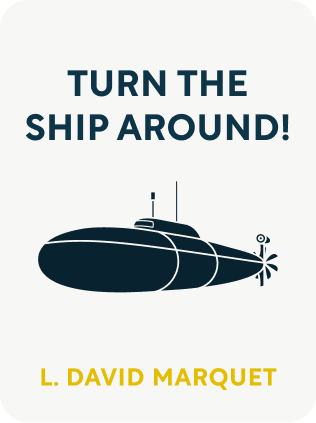

This article is an excerpt from the Shortform book guide to "Turn the Ship Around" by L. David Marquet. Shortform has the world's best summaries and analyses of books you should be reading.
Like this article? Sign up for a free trial here .
What did L. David Marquet do when he first took command of a submarine? What leadership lessons did he get a chance to put into action?
Today, L. David Marquet is known as a remarkable leader who turned things around for a demoralized submarine crew. He did this by putting into action the leadership lessons he learned in his early years in the Navy. The primary lesson was realizing that everyone can think and act like a leader.
Read more to learn what L. David Marquet did in the first few months of his new command.
Leading a New Crew
L. David Marquet was assigned to command USS Santa Fe. His new boss, Commodore Mark Kenny, had pushed for him to get the job of turning around Santa Fe because of Marquet’s hunger for learning during commanding officer training.
Yet Santa Fe was the ship the PCOs (prospective commanding officers) had joked about in training. A photo of the control room crew carrying on instead of paying attention had gone viral the previous year.
L. David Marquet needed to get Santa Fe ready for deployment in six months; it was to join a battle group for a torpedo exercise in the Arabian Gulf, demonstrating combat effectiveness. He decided not to replace anyone on the crew, to send the message that he believed Santa Fe had a leadership problem, not an incompetent crew. But Marquet needed to quickly change the way they operated.
The key personnel on the 135-person crew were:
- An executive officer (XO) or second in command
- Four department heads, or officers overseeing weapons, engineering, navigation/operations, and supply
- Junior officers
- 12 chiefs—senior enlisted men, the equivalent of middle management; their technical expertise and leadership were critical to getting things done right
L. David Marquet had a chance to try a leader-leader approach, but if Santa Fe wasn’t ready for deployment, he’d be solely responsible.
Getting Up to Speed
On his first visit to Santa Fe, when Marquet greeted crew members, they didn’t make eye contact. They seemed defeated, having been told repeatedly that their submarine was the worst.
The equipment around the ship was different from any he’d worked with before. So instead of relying on his technical expertise, as he had in the past, Marquet had to rely on and learn from the crew.
On past assignments, he’d asked questions, to which he knew the answers, in order to test the crew. This time, he was asking out of curiosity and in order to learn. This unusual position also allowed him to focus on the people and interaction rather than the equipment.
In interviews, he asked the officers and chiefs questions such as:
- What should I not change?
- What do you hope I will change?
- What good things should we build on?
- What gets in the way of doing your job?
In reviewing what he’d heard, Marquet realized there were a lot of problems with how Santa Fe operated—for instance, delays; screw-ups; careless handling of evaluations, transfers, and requests for leave; and failure to review reports and records.
L. David Marquet’s Decision to Adopt a New Leadership Model
Initially, Marquet spent his time walking around and talking to people. He attended a department heads meeting—everyone was late and the meeting started late because they waited for the CO. Marquet talked afterward to Lieutenant Dave Adams, the weapons officer, who was frustrated because he wanted to improve his department but his ideas were being shot down by superiors. The chiefs working for him weren’t eager to change either.
Adams was running into the problem with the leader-follower model: inertia. However, Marquet was encouraged by the officer’s attitude and desire to improve things.
As another example, Marquet found a junior sailor upset because his request for Christmas leave had received no response, though he submitted it many weeks ago. Procedures called for this kind of request to go through seven people. Marquet tracked it down and took care of it—in this case, the system rather than the people failed.
He also spent time observing the ship’s routines, many of which were pointless or demoralizing.
Despite the many issues, he sensed that the crew still wanted to do well and wanted things to improve. He felt he could tap into the desire for change. For him, the crew’s frustration was a call to action. He decided to go ahead with a leader-leader model.
You can read the rest of L. David Marquet’s story in his book Turn the Ship Around.
Questions for Leaders
- Do people in your organization want change or to keep the status quo?
- Are they frustrated by inefficient systems and red tape that makes their jobs harder?
- Are managers complacent?
- Do people focus on covering their butts or on making the organization better?
- Are you maintaining control or giving control?

———End of Preview———
Like what you just read? Read the rest of the world's best book summary and analysis of L. David Marquet's "Turn the Ship Around" at Shortform .
Here's what you'll find in our full Turn the Ship Around summary :
- How a captain turned the U.S. Navy’s worst-performing nuclear submarine crew into one of the best
- The principles for developing leaders at all levels to create a passionate, high-performing workforce
- Why the "leader-leader" model works better than the "leader-follower" model






